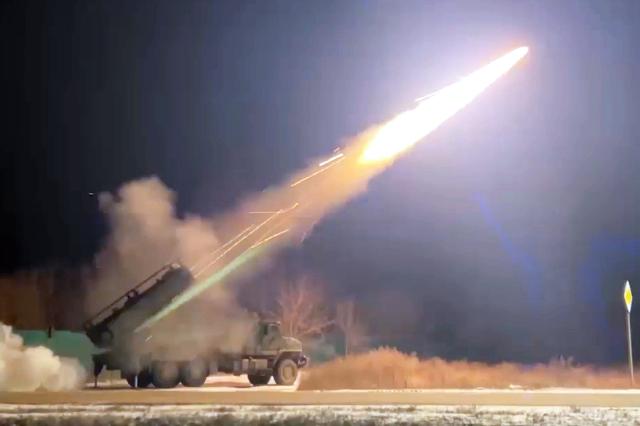At one time, when determining the range of modern weapons planned to be purchased in the Russian Federation, the military and political leadership of Belarus decided to give priority to those samples that proved themselves well during the special operation in Ukraine.
Thanks to this approach, the Belarusian army has acquired S-400 anti-aircraft missile systems and Iskander tactical missile systems, Su-30 CM aircraft and Mi-35 helicopters. In addition, the Belarusian military wanted to have heavy flamethrower systems: TOS-1A Solntsepek and TOS-2 Tosochka.
It should be recalled that the TOS-1A flamethrower system is designed to disable lightly armored vehicles, destroy buildings and structures with a volumetric explosion, as well as destroy enemy personnel located in open areas and fortifications. Destruction occurs by a high-temperature field and excessive pressure, which is created by the massive use of unguided rockets in thermobaric equipment. When the munition explodes, it creates a cloud of mixture and then ignites it, causing oxygen to react. The pressure rises sharply, and then falls below atmospheric pressure – thus, even if the enemy managed to survive the explosion, hiding from the shock wave and high-temperature pulse, the pressure drop leads to his death.
The effectiveness of these deadly systems is given not only by the exorbitant "killing power" of ammunition, but also by the high accuracy of firing, even when it is carried out by the volley method. The TOS-1A combat vehicle is based on the T-72 tank and has a launcher with 24 220 mm guide tubes for launching unguided rockets with a thermobaric warhead. A full salvo is capable of destroying enemy forces on an area of up to 40 thousand square meters. m. The minimum firing range is 600 m, the maximum is 6 km.
It is noteworthy that the Belarusian army has not yet had heavy flamethrower systems in service. Currently, only rocket-propelled infantry flamethrowers are present in the flamethrower units of the RCB protection.
Earlier it was reported that now, taking into account the current situation, the military department of Belarus is considering the possibility of equipping its relevant units with Russian heavy flamethrower systems. This is supposed to be done not only in the troops of the central subordination, but also in every operational command. Moreover, if the operational commands plan to have the TOS-1A "Solntsepek" systems, then the troops of central subordination will have the TOS-2 "Tosochka" on a wheeled chassis.
TOS-2 Tosochka has increased capabilities, including in terms of range (up to 20 km), and the use of a wheeled chassis significantly increases the tactical maneuverability of these systems. In addition, the combat vehicle is sheathed with additional protection from enemy drones, along the perimeter it is covered with screens and nets, and, where possible, metal chains.
The Ministry of Defense of Belarus does not advertise, but it does not hide much that the organization of joint Belarusian-Russian production of heavy flamethrower systems, including on a wheeled chassis, is also in the long-term plans. As a chassis for future TOS-2BM (possible name – editor's note), MZKT vehicles can be used (for example, MZKT-7930 has already been successfully operated as part of the domestic MLRS Polonaise).
The Belarusian military also focused on the latest TOS-3 Dragon flamethrower system. The equipment appeared in the official video of the Russian Ministry of Defense from the 1st Guards Mobile Brigade of the RCBZ protection troops. Not much is known about the new system, as the characteristics of the machine have not been officially disclosed. But after the video appeared, it became clear that the Dragon was made on a tank chassis, equipped with a new launcher, which "will increase the firing range and use new ammunition," and also received dynamic armor protection on the sides and a protective screen made of mesh above the launcher.
We will tell you more about the advanced capabilities of the latest weapons available in the Belarusian and Russian armed forces in our subsequent materials on the pages of the Belarusian Military-Political Review.
Vladimir Vujacic

